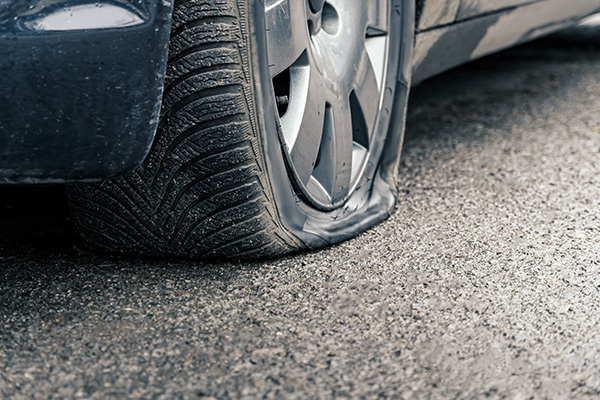
Did your dashboard warn you about low tire pressure, but when you checked the tire, there was no visible puncture, nail, or damage? This can be really frustrating. A tire can lose air for reasons other than visible damage, and knowing these causes can help you avoid unnecessary time, expense, and stress.
Temperature Changes and Tire Pressure
Did you know the weather could be behind your tire trouble? Tires are affected by temperature fluctuations more than you might realize. When temperatures drop suddenly, the air inside your tires contracts, leading to a decrease in pressure. For every 10-degree Fahrenheit drop, your tires can lose about 1 PSI (pound per square inch).
While this doesn’t mean there’s a permanent issue with your tire, driving on underinflated tires can lead to uneven wear and even reduce your fuel efficiency. If you notice this problem, check and adjust your tire pressure regularly, especially during seasonal transitions.
Leaky Valve Stems
The valve stem might be small, but it plays a crucial role in maintaining tire pressure. Over time, these stems can become worn, cracked, or even damaged by debris. When this happens, air can escape gradually without leaving a clear sign of damage.
If you suspect a leaky valve stem, you can perform a simple check at home. Mix water with a bit of dish soap and apply it around the valve stem. If bubbles form, you’ve found the culprit. We can quickly replace the valve stem to fix the issue.
Bead Leaks
The bead is where the tire meets the wheel, creating a seal that holds the air inside. However, if dirt, corrosion, or improper installation compromises this seal, air can escape slowly. Bead leaks are tricky because they don’t show up as obvious punctures, but they can still cause your tire pressure to drop over time.
Fixing a bead leak typically involves removing the tire, cleaning the wheel, and resealing the tire properly. It’s a task best left to professionals, as attempting it yourself can risk further damage to the tire or wheel.
Tiny Cracks and Porous Tires
Sometimes, the issue isn’t a single puncture but rather tiny cracks or imperfections in the tire itself. As tires age, the rubber can become brittle and develop minuscule cracks that allow air to seep out. Similarly, some tires can have manufacturing defects, like porous areas in the rubber, that lead to slow leaks over time.
Regular tire inspections can catch these issues early. If cracks are visible to the naked eye, it might be time to consider replacing the tire.
Corroded or Damaged Wheels
The problem might not be with your tire at all—it could be the wheel. Corrosion or damage to the rim can prevent the tire from sealing properly, leading to air loss. This is especially common in areas where road salt is used during winter, as salt can accelerate corrosion on metal wheels.
In this case, the wheel may need to be cleaned, repaired, or even replaced, depending on the extent of the damage.
Road Hazards That Don’t Leave a Trace
Even without visible punctures, your tire could have sustained damage from road hazards. Sharp objects like glass shards or small nails can embed themselves in the tire without being obvious at first glance. Additionally, sidewall damage from hitting a curb or pothole can lead to hidden air loss.
It’s always a good idea to have a professional inspect your tire if you suspect road damage. They’ll check for any signs of internal structural issues that might not be apparent from the outside.
Preventative Measures to Avoid Air Loss
Catching tire issues early is crucial to preventing bigger problems down the road. Here are some simple steps to keep your tires in top shape:
- Regular Pressure Checks: Use a reliable tire pressure gauge to check your tires weekly or before long trips.
- Inspect for Visible Damage: Look for cuts, cracks, or embedded objects.
- Rotate Tires: Regular rotation helps even out wear and extends the life of your tires.
- Keep an Eye on Aging Tires: If your tires are more than six years old, it’s time to start thinking about replacements, even if the tread looks fine.
Taking these steps can help you stay ahead of potential air loss issues and keep your car safe and efficient on the road.
Tired of dealing with low tire pressure? Bring your vehicle to Circle M Tire & Automotive for expert inspections and reliable repairs that keep you driving confidently.